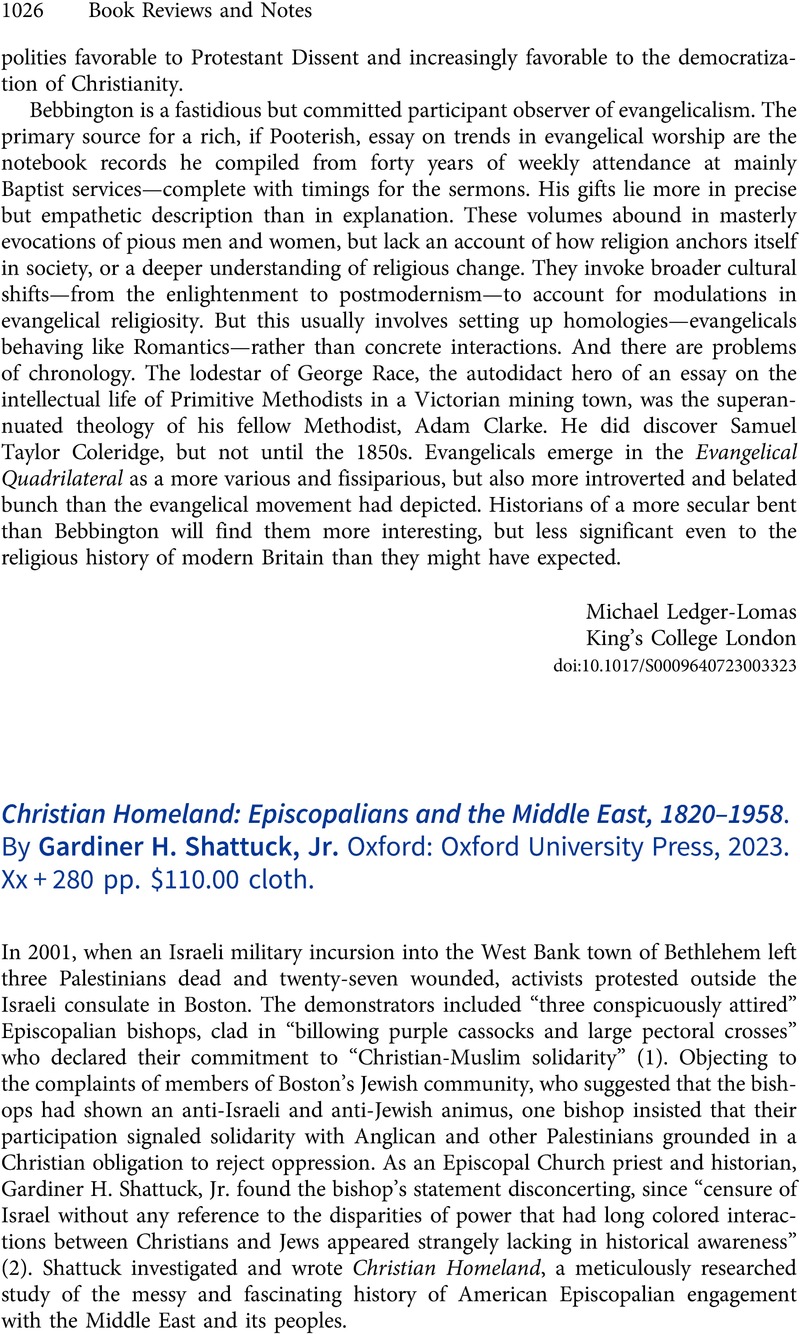No CrossRef data available.
Article contents
Christian Homeland: Episcopalians and the Middle East, 1820–1958. By Gardiner H. Shattuck Jr. Oxford: Oxford University Press, 2023. Xx + 280 pp. $110.00 cloth.
Review products
Christian Homeland: Episcopalians and the Middle East, 1820–1958. By Gardiner H. Shattuck Jr. Oxford: Oxford University Press, 2023. Xx + 280 pp. $110.00 cloth.
Published online by Cambridge University Press: 19 March 2024
Abstract
An abstract is not available for this content so a preview has been provided. Please use the Get access link above for information on how to access this content.

- Type
- Book Reviews and Notes
- Information
- Copyright
- Copyright © The Author(s), 2024. Published by Cambridge University Press on behalf of American Society of Church History


